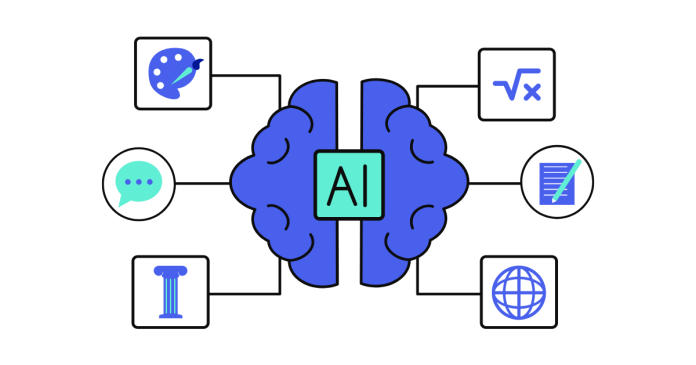Knowledge representation is a fundamental aspect of artificial intelligence (AI) that involves encoding information about the world in a form that a computer system can utilize to solve complex tasks. It bridges the gap between human understanding and machine processing. Here are the primary techniques used in knowledge representation:
1. Logical Representation
- Description: Uses formal logic to represent knowledge in a structured and unambiguous manner. Logical statements are based on facts and rules.
- Types:
- Propositional Logic: Deals with simple declarative statements.
- Predicate Logic: Extends propositional logic with quantifiers and predicates for more detailed knowledge.
- Advantages:
- Clear and precise.
- Well-suited for reasoning and problem-solving.
- Disadvantages:
- Computationally expensive.
- Hard to represent uncertain or incomplete information.
2. Semantic Networks
- Description: Represents knowledge as a network of nodes (concepts) and edges (relationships). For example, “A cat is a mammal” can be represented as a connection between the nodes “cat” and “mammal.”
- Applications: Useful in natural language processing and relationship-based queries.
- Advantages:
- Intuitive and easy to visualize.
- Good for representing relationships and hierarchies.
- Disadvantages:
- Becomes complex for large datasets.
- Inefficient for some types of reasoning.
3. Frame-Based Representation
- Description: Represents knowledge as a set of “frames,” which are structured data templates. Each frame contains slots (attributes) and their values.
- Example: A “Car” frame might have slots like “Make,” “Model,” “Color,” and “Engine.”
- Advantages:
- Easy to organize and update.
- Good for representing stereotypical situations or objects.
- Disadvantages:
- Limited reasoning capabilities.
- Not suitable for dynamic scenarios.
4. Rule-Based Representation
- Description: Knowledge is encoded as a set of “if-then” rules. These rules help in decision-making and reasoning.
- Example:
- Rule: If it rains, then carry an umbrella.
- Fact: It is raining.
- Conclusion: Carry an umbrella.
- Advantages:
- Easy to implement and understand.
- Suitable for expert systems.
- Disadvantages:
- Difficult to scale for large knowledge bases.
- Requires precise knowledge.
5. Ontologies
- Description: Represents knowledge as a formal model of a domain, including concepts, attributes, and relationships. Ontologies are widely used in semantic web technologies.
- Example: A medical ontology might include diseases, symptoms, and treatments with their interrelationships.
- Advantages:
- Facilitates knowledge sharing and reuse.
- Rich and expressive.
- Disadvantages:
- Requires domain expertise.
- Complex to build and maintain.
6. Scripts
- Description: Represents knowledge about sequences of events or actions. Scripts are used to model typical scenarios or procedures.
- Example: A “restaurant script” might include events like ordering, eating, and paying.
- Advantages:
- Captures temporal sequences effectively.
- Suitable for understanding stories or procedures.
- Disadvantages:
- Limited flexibility.
- Not ideal for non-routine situations.
7. Procedural Representation
- Description: Represents knowledge as a set of procedures or instructions to perform specific tasks.
- Example: An algorithm to sort a list of numbers.
- Advantages:
- Efficient for task execution.
- Suitable for procedural knowledge.
- Disadvantages:
- Not intuitive for representing declarative knowledge.
- Hard to infer or reason beyond predefined procedures.
8. Fuzzy Logic Representation
- Description: Represents knowledge using degrees of truth rather than binary true/false values. This is helpful in handling uncertainty and imprecise information.
- Example: “The weather is moderately hot” can be expressed in fuzzy terms.
- Advantages:
- Handles uncertainty and vagueness well.
- Mimics human reasoning.
- Disadvantages:
- Computational complexity.
- Requires careful design of membership functions.
9. Neural Networks
- Description: Represents knowledge implicitly by learning patterns and features from data. Neural networks are widely used in machine learning and AI.
- Advantages:
- Learns directly from data.
- Handles complex, nonlinear relationships.
- Disadvantages:
- Lack of interpretability.
- Requires large datasets and computational resources.
10. Hybrid Representation
- Description: Combines multiple representation techniques to leverage their strengths and mitigate their weaknesses.
- Example: Combining logical reasoning with neural networks for improved decision-making.
- Advantages:
- Flexible and powerful.
- Addresses limitations of individual techniques.
- Disadvantages:
- Increased complexity.
- Challenging to implement and maintain.
Conclusion
Knowledge representation in AI is vital for creating intelligent systems that can understand, reason, and solve problems effectively. Each technique has its strengths and weaknesses, and the choice depends on the specific problem domain and application requirements.



